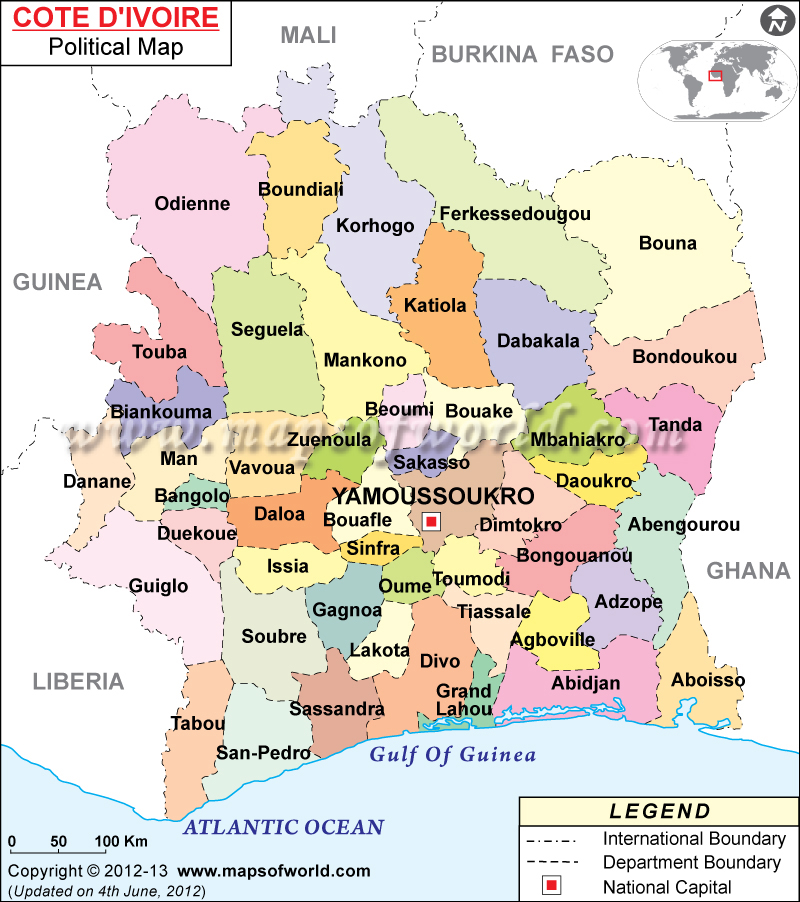After more than a century of French rule – and a 15-year fight – the Cote d’Ivoire gained its independence from its colonial masters on August 7th, 1960. Thanks to the work of a variety of native cocoa farmers (particularly future head of state Felix Houphouet-Boigny) the prosperous West African nation gradually transitioned out from under the thumb of Parliament in Paris to become one of the most successful non-oil-exporting countries on the continent. The connection between France and the tribal lands that would become the Cote d’Ivoire could be described as tense at best throughout most of its history. As opposed to neighboring countries like Ghana or Liberia, the number of available ports within the territory was rather limited – a factor which kept many European nations at bay, both with respect to the slave trade and the establishment of colonies to advance holdings on Africa. The Portuguese had arrived in 1482, but it took another 150 years for a settlement to be established, a French mission in the modern resort town of Assinie. Two centuries passed before ships from France moved in for good. Treaties were signed with the kings of Grand Bassam and Assinie to declare the regions part of the French Empire. After a long slog through the jungles by tradesmen and missionaries, the territory advanced to its present size in 1915 (this despite being named a colony in 1893). Though misunderstandings – not to mention military battles – frequently arose between the natives and white settlers, France continued trading with the area and finding goods to export in order to compete with the British colonies to the east. By 1930, a handful of natives were receiving French education to aid in administration between the colony and its representatives in Paris. The rest of the nation, unable to rise to such status, often ended up working in mines and on plantations to pay a head tax put in place at the turn of the 20th century to fund infrastructure. Shortly after World War II, the provisional French government thanked its African “subjects” for remaining loyal during the conflict by granting them citizenship, allowing for the establishment of political entities and ending the practice of required work for governmental purposes. These early freedoms did much to advance the cause of independence within the Cote d’Ivoire. In 1944, two years before receiving citizenship, Houphouet-Boigny formed a trade union to protest the unbalanced trade agreements which gave French plantation owners tremendous advantages over native cocoa farmers. While representing the colony in Paris, he built strong relationships with the administration in France which led to the 1956 Overseas Reform Act, the first statute establishing territorial governments elected by locals. Noticing the success of these organizations under native control, the Cote d’Ivoire became a self-managing part of the French Community in 1958. Then, on August 6, 1960, the other shoe dropped – Cote d’Ivoire declared its independence and instantly became one of the most prosperous nations in West Africa. Having been the primary source of French exports (40 percent), the country quickly grew to become the largest producer of cocoa in the world and third-biggest supplier of coffee. And, as if to cement the success of an economy growing at 10 percent annually for two decades, the French population in Cote d’Ivoire doubled by 1980, a rarity for former European colonies
August 7, 1960 CE – Cote d’Ivoire Declares Independence from France
After more than a century of French rule – and a 15-year fight – the Cote d’Ivoire gained its independence from its colonial masters on August 7th, 1960. Thanks to…
429
